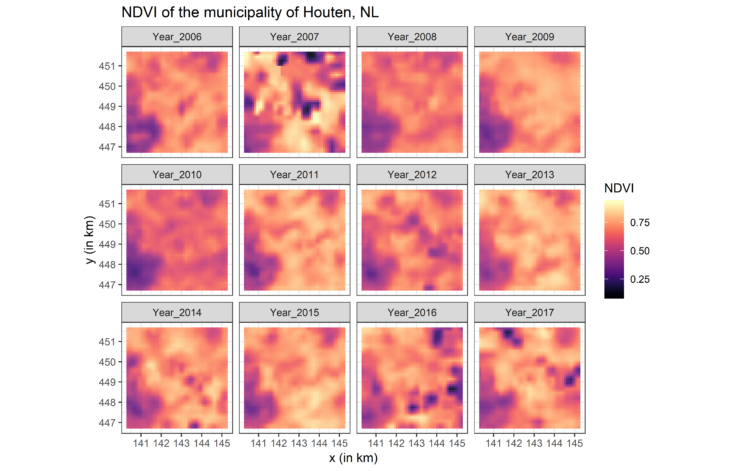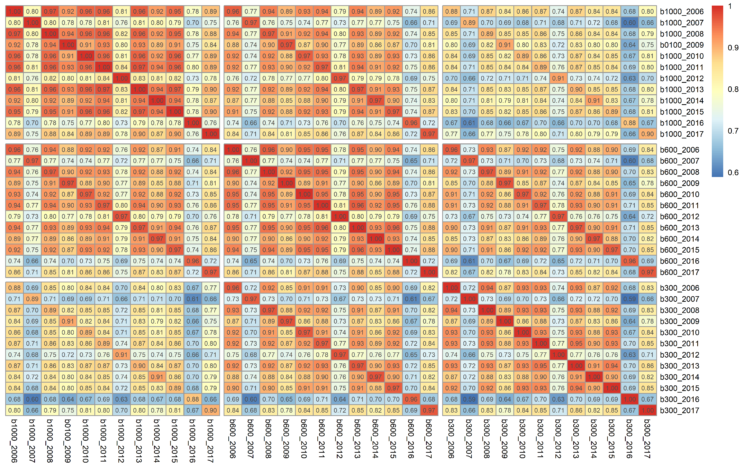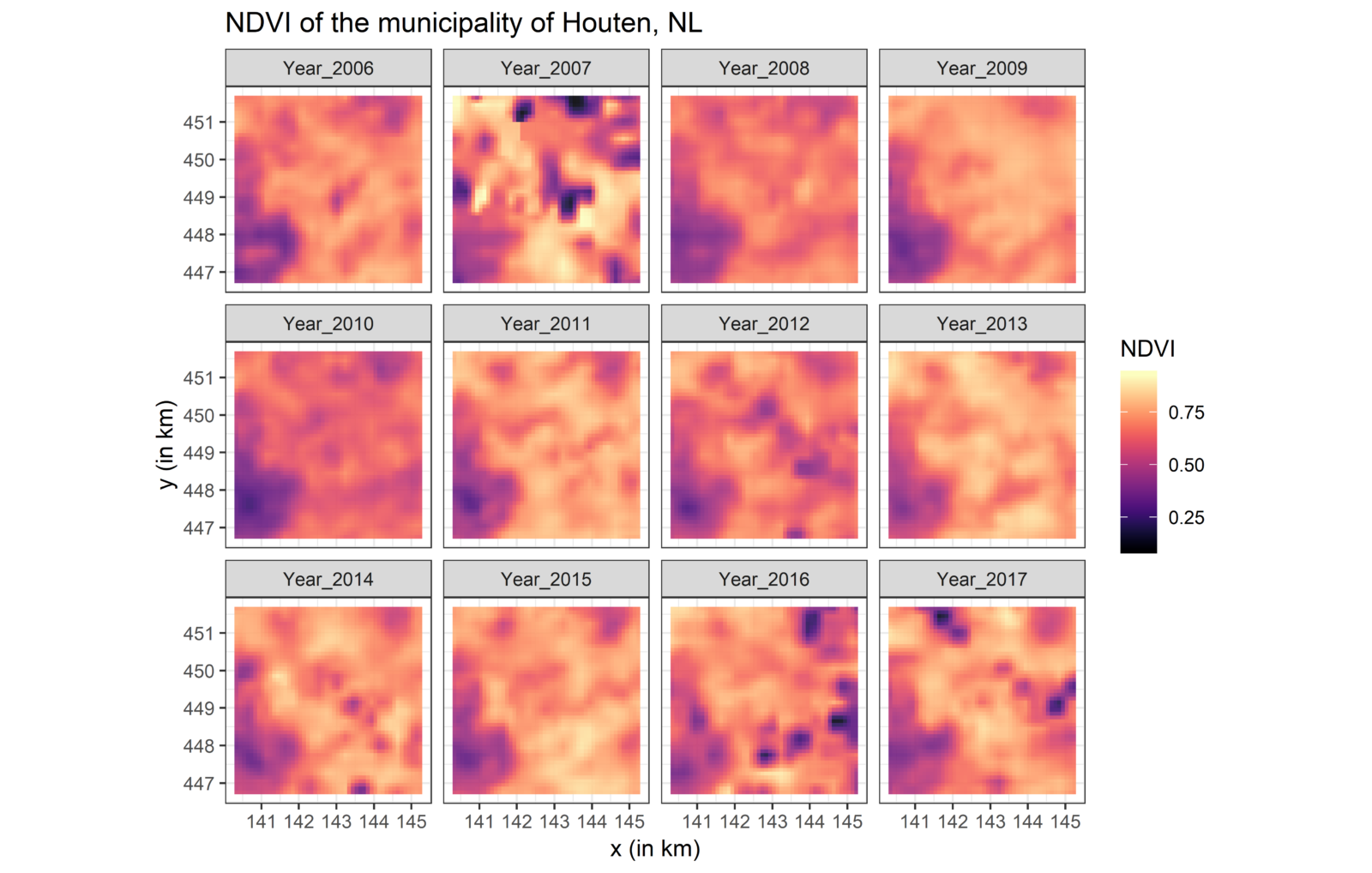News
Spatiotemporal Contextual Uncertainties in Green Space Exposure Measures: Exploring a Time Series of the Normalized Difference Vegetation Indices
Environmental health studies on green space may be affected by contextual uncertainties originating from the temporality of environmental exposures and by how the spatial context is delimitated. The Normalized Difference Vegetation Index (NDVI) is frequently used as outdoor green space metric capturing the chlorophyll content in the vegetation canopy. This study assessed 1) whether residential NDVI exposures vary over time, and 2) how these time series of NDVI scores vary across spatial context delimitations. Multi-temporal NDVI data for the period 2006–17 for the Netherlands were obtained from the Moderate Resolution Imaging Spectroradiometer (MODIS) satellite platform.

Annual NDVI exposures were determined across multiple buffer sizes (i.e., 300, 600, and 1,000 meters) centered on a random sample of 10,000 Dutch residential addresses. Besides descriptive statistics, pairwise Wilcoxon tests and Fligner–Killeen tests were used to determine mean and variance differences in annual NDVI scores across buffer widths. Heat maps visualized correlation matrices. Significance levels were adjusted for multiple hypotheses testing. The results indicated that annual NDVI metrics were significantly correlated but their magnitude varied notably between 0.60 to 0.97.

Numerous mean and variance differences in annual NDVI exposures were significant. It seemed that disparate buffers (i.e., 300 and 1,000 meters) are less strongly correlated, possibly because variance heterogeneity is reduced in larger buffers. These results are largely consistent over the years and passed Monte Carlo-based sensitivity tests. In conclusion, besides assessing green space exposures along different buffer sizes, our findings suggest that green space–health studies should employ NDVI data that are well-aligned with epidemiological data. Even an annual temporal incompatibility may obscure or distort green space–health associations. Both strategies may diminish contextual uncertainties in environmental exposure assessments.

